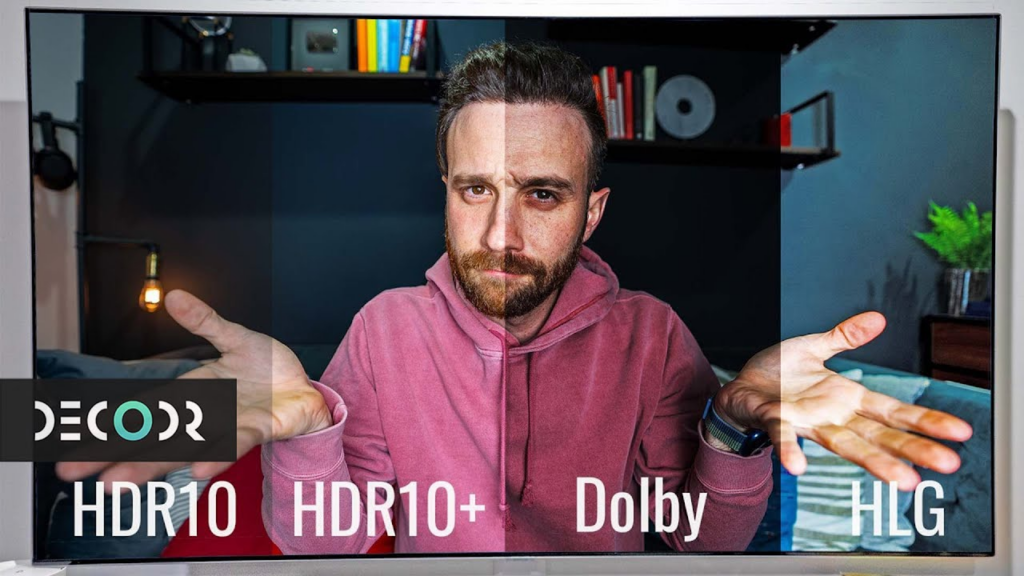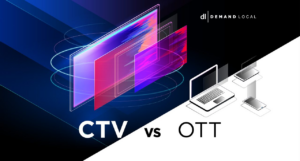HDR10+ represents an enhanced version of the widely adopted HDR10 standard for high dynamic range video.
Introduced in 2017, HDR10+ incorporates dynamic metadata that allows frame-by-frame adjustments to picture quality similar to Dolby Vision.
This provides finer tuning of colors, contrast, and brightness based on creative intent compared to standard HDR10’s static metadata.
TVs with HDR10+ support can display content encoded in this format with improved detail, depth, and vividness.
While Dolby Vision currently has wider adoption, HDR10+ offers an open standard alternative spearheaded by companies like Samsung, Panasonic, and Amazon for delivering premium HDR quality.
This article takes an in-depth look at what HDR10+ is, how it works, content availability, key benefits of HDR10, and what to consider when shopping for an HDR10+ compatible 4K television.

What is HDR10+?
HDR10+ is an enhanced version of the HDR10 standard promoted by the HDR10+ Technologies group.
Like HDR10, it uses the 10-bit color depth and up to 1000 nits (or more) of peak brightness supported by most new 4K TVs today.
However, HDR10+ builds upon this by adding dynamic metadata that analyzes each scene and frame.
The changing metadata allows the television to continuously optimize picture settings to bring out the best contrast, detail, color saturation, and brightness.
This provides a noticeable visual upgrade over standard HDR10’s static metadata approach.
HDR10+ offers an open standard alternative to Dolby Vision’s proprietary dynamic metadata technology.
It is royalty-free and backward compatible with HDR10. Content mastered in HDR10+ also contains a baseline HDR10 video track. This ensures wide device compatibility.
How HDR10+ Works
During content creation, dynamic tone mapping data is generated per scene and encoded into the video stream.
This metadata analyses the brightness and color levels in each frame.
On playback, an HDR10+ compatible TV can process this dynamic metadata in real time to render optimized picture quality on a scene-by-scene basis.
The adjustments are made based on the display’s specific capabilities to unlock the full artistic intent.
For example, details in bright areas that may normally get lost are preserved. Shadows get the right degree of contrast while still revealing detail.
Colors transition smoothly from frame to frame to avoid jarring changes in appearance. The result is an image more faithful to the creator’s vision.
Benefits of HDR10+
Here are some of the benefits that HDR10+ provides over standard HDR10:
- Frame-by-frame picture optimization based on creative intent
- Improved highlight and shadow detail
- More consistent colors and transitions from scene to scene
- Brighter brights, deeper darks, and richer color saturation
- No detail loss from static tone mapping
- Leverages TV’s full contrast and brightness range
- Display independently so looks fantastic on every screen
- Open standard alternative to Dolby Vision
In summary, HDR10+ offers a meaningful upgrade over HDR10, approaching Dolby Vision quality thanks to its dynamic metadata capabilities.

HDR10+ Content Availability
The HDR10+ content ecosystem is growing steadily:
- Amazon Prime Video provides a wide selection of HDR10+ movies and shows from major studios. Amazon also offers its original content in HDR10+.
- Rakuten TV in Europe streams movies in HDR10+ quality from Hollywood studios.
- The HDMI Forum recently announced support for HDR10+ in new Ultra HD Blu-ray player chipsets, paving the way for HDR10+ disks.
- RED Digital Cinema cameras can record and grade video in HDR10+ for theatrical and home release.
- Spears & Arrows offers HDR10+ mastering services so content providers can prepare titles in the format.
While still lagging behind Dolby Vision, HDR10+ is gaining momentum in the home video space. And more TV makers support it in newer 4K models.
Key Considerations for an HDR10+ TV
To enjoy the full quality of HDR10+ content, here are some display features to look for in a compatible television:
- HDR10+ certification – Guarantees proper support to process dynamic metadata and display content as intended. Models from Samsung, Panasonic, TCL, Hisense, Toshiba, and others carry the HDR10+ logo.
- High peak brightness – Needs to support 1000 nits or more for intense highlights to truly stand out. Full array local dimming boosts brightness.
- Wide color gamut – Look for at least 90% DCI-P3 coverage for rich, vivid colors. Samsung’s QLED TVs excel here with 100% DCI-P3.
- HDMI 2.0a input – Latest HDMI spec to handle HDR10+ signals from external devices like Blu-ray players.
- HDCP 2.2 – Content protection enables playback of HDR10+ streams from services like Amazon Prime Video.
- Processor – Must capably handle HDR10+’s dynamic metadata at rapid frame rates for optimal picture enhancement.
- Content library – Ensure your desired streaming apps and external devices offer titles in HDR10+ to appreciate its benefits.

Frequently Asked Questions (FAQ)
Q1: Will HDR10+ replace HDR10?
Ans: HDR10+ builds on top of the core HDR10 standard, providing backward compatibility. It supplements rather than replaces HDR10. This ensures wide device support.
Q2: Is HDR10+ superior to standard HDR10?
Ans: Yes, the dynamic metadata in HDR10+ enables scene-by-scene adjustments to picture quality that allow TVs to display content closer to the creator’s intent. It’s a marked upgrade over HDR10’s static approach.
Q3: Is Dolby Vision or HDR10+ better?
Ans: Dolby Vision currently has some technical advantages and more content support. But HDR10+ provides an open, royalty-free alternative that also delivers excellent HDR quality, with expanded content ecosystems.
Q4: Can any 4K TV display HDR10+?
Ans: No, the TV must be certified by the HDR10+ organization to ensure proper support. Non-compatible TVs will simply playback in baseline HDR10 quality.
Q5: Do I need new cables for HDR10+?
Ans: HDR10+ has the same requirements as HDR10 – HDMI cables must support HDMI 2.0a specs for 4K HDR. For best performance, Ultra High-Speed HDMI cables are recommended but not required.




